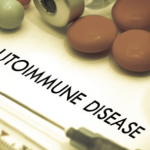Osteoarthritis (OA) is associated with an increased risk of cardiovascular disease. OA patients may avoid painful physical activity, including walking. Such inactivity reduces cardiorespiratory fitness, an independent predictor of cardiovascular disease. Thus, OA may be an indirect cause of cardiovascular disease. Currently, OA has no cure, which makes it important to identify modifiable factors to limit the effects of disease.
New research from Kenth L. Joseph, MSc, and colleagues from Diakonhjemmet Hospital, Oslo, Norway explores the association of the ability to walk and the risk of cardiovascular disease (CVD) in OA patients. In a cross-sectional study, researchers conducted clinical examinations of patients with self-reported OA (n=500; 40–80 years old), who were then matched with the general population (n=235). To measure walking ability and cardiorespiratory fitness, patients underwent a six-minute walking distance test. Patient arterial stiffness was measured by pulse wave velocity. Researchers conducted age-stratified analyses to calculate differences between the groups. Their results were published in February 2019 Arthritis Care & Research.
The Results
“Even at age 40 years, patients with OA had a significantly shorter walking distance compared with that of their age-matched peers in the general population,” write the authors. “Furthermore, we also observed a significant inverse association between the [walking distance] and arterial stiffness in this population-based OA cohort, suggesting that walking ability is an important factor in the CVD risk profile.”
Women with OA walked 535 m compared with 589.3 m for women in the general population. Men with OA walked 593.8 m compared with 642.9 m by men in the general population. The largest mean difference in walking distance was seen in the youngest age group (40–49 years), with women with OA walking 84.6 fewer meters than those without OA and men with OA walking 88.3 fewer meters than those without OA. This gap gradually decreased as age increased.
Arterial stiffness remained significantly and inversely associated with pulse wave velocity measures. Researchers found an increase in the walking distance of 100 m corresponded to a reduction in pulse wave velocity of 0.3 meters/second.
The authors conclude by noting the importance of physical activity for OA patients, suggesting assessment of cardiorespiratory fitness should be prioritized in clinical practice and improved cardiorespiratory fitness should be a treatment goal to prevent cardiovascular comorbidity. They write, “The results reinforce the strength of the guidelines for physical activity and emphasize the importance of an early and broad clinical approach to OA, addressing prevention and management of CVD risk along with treatment of joint-related symptoms.”


